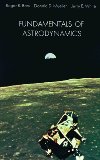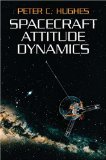NASA dicit:
This view was captured by NASA’s Curiosity Mars rover within Gediz Vallis channel, which was likely formed by ancient floodwaters and landslides. After Curiosity drove over a bright stone and cracked it open, scientists discovered it was filled with pure sulfur — something that’s never been seen on Mars before. The rover has discovered lots of sulfur-based minerals in the past, but not pure sulfur. In the video, a separate image of the sulfur crystals appears embedded roughly where the rock was found; the camera’s view of the rock was blocked by the rover at the time this panorama was taken.
You’ll also see Curiosity’s robotic arm, which is raised after drilling its 41st hole at a location nicknamed “Mammoth Lakes.” The sample collected by Curiosity was dropped into instruments in its belly, and will help scientists understand how this area formed.
The rover used its Mast Camera, or Mastcam, to take this panorama on June 19, 2024, the 4,220th Martian day, or sol, of the mission. It’s made up of 336 individual images that were stitched together. The color has been adjusted to match lighting conditions as the human eye would see them on Earth.
Video credit: NASA Jet Propulsion Laboratory









 Subscribe to blog posts using RSS
Subscribe to blog posts using RSS










